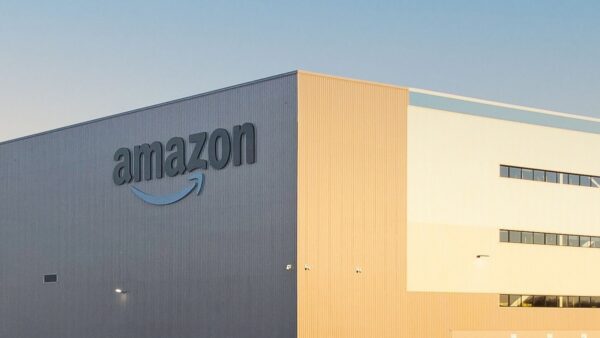
New Building Regulations changes include tougher energy performance standards for non-domestic properties in England and Wales, relating particularly to the fabric and HVAC systems. Rob Gill explains.
What’s changing?
The misleadingly titled Building (Amendment) Regulations 2021 take effect in England on 15 June 2022. These contain tough new standards for the energy performance and carbon emissions of new non-domestic properties in England and Wales.
Part L2A, which has effectively been rewritten, is the section which contains the most sweeping changes and is likely to have the greatest impact on construction professionals. It includes specifics relating to fabric limits, carbon factors, and heating, ventilation and air conditioning systems.
What are the objectives of the changes to Part L2A?
They aim to cut carbon emissions from new non-domestic properties by an average of 27% – and those from warehouses by a typical 36% – compared to the previous regulations implemented nine years ago.
What do the rules say about fabric limits?
They specify new maximum U-values, the heat loss allowed through particular building elements, expressed in watts per square metre Kelvin (W/m2.K).
Reductions from the 2013 figures include for walls (0.35 to 0.26), floors and roofs (both 0.25 to 0.18), plus windows (2.2 to 1.6 or possession of energy band rating B). Doors are cut from 2.2 to 1.4. Rooflights remain unchanged at 2.2.
In addition, the regulations reduce a building’s maximum air permeability – the amount penetrating its fabric from outside. This is expressed as the hourly total of air entering, per square metre of the internal envelope, at a particular reference pressure in pascals. Here, the cuts are from the previous sole 10m2/h.m2 @ 50Pa to new levels of 8m2/h.m2 @ 50Pa and 1.57m2/h.m2 @ 4Pa.
You also mentioned carbon factors?
Yes. This is an estimate of the amount of carbon produced through a unit of energy generated from a particular fuel. Carbon factors are used to help calculate a building’s overall emissions. They are updated regularly, as the carbon intensities of fuels change. They are expressed as kilograms of carbon dioxide per kilowatt hour (kg CO2/kWh).

“The changes aim to cut carbon emissions from new non-domestic properties by an average of 27% compared to the regulations of nine years ago.”
Headline news from the new rules is the huge reductions they make in carbon factors for grid-supplied electricity. These reflect the fuel’s significantly greater cleanliness, due to the upsurge in the amount generated from renewable sources since 2013.
The new factors indicate the consequent desire of the authorities for designers to use grid-supplied electricity, rather than alternatives such as the previously popular natural gas, as the predominant fuel for building elements, including heating and hot water systems.
The carbon factors for grid supplied and displaced electricity were previously both 0.519, but the new regulations have introduced a system under which these values vary with the month. For power, except that generated by solar photovoltaic (PV) systems, the updated numbers range from 0.163 in January to 0.111 in July. For grid-displaced electricity from PV systems, the variance is from 0.196 in January to 0.092 in July.
Other reductions in carbon factors include for natural gas (from 0.216 to 0.21), biogas (0.098 to 0.024) and biomass (0.031 to 0.029). Cuts have also been made for waste heat (0.058 to 0.015), smokeless fuel (0.433 to 0.366) and dual fuel appliances (0.226 to 0.087).
The carbon factors for coal (0.345 to 0.375) and anthracite (0.394 to 0.395) have risen, while those for oil and liquefied petroleum gas have remained unchanged at 0.319 and 0.241 respectively.
What about heating, ventilation and air conditioning systems?
The main changes here are the rises stipulated in minimum energy performances.
These increases include in the efficiency of natural gas boilers with capacities of less than 2MW (from 91% to 93%) and natural gas water heaters (from 90% direct and 80% indirect to 91% across the board). The upgrades for cooling systems are from standard energy efficiency ratios (EERs) of 2.6 to seasonal ratios (SEERs) of 5.0, for both the split and variable refrigerant flow types.
In contrast, the requirements for heat pumps and domestic hot water heat pumps have remained unchanged, at 2.5 and 2.0 coefficient of performance (COP) respectively, reflecting an understandable desire by the authorities to encourage their use.
Rob Gill is founder and managing director of building physics engineering consultancy Yonder
Comments
Comments are closed.












Sigh.
Here we go again. This is exactly the sort of micro-management that has led to the simple fact that, forty four years after I ran my first – and only – large scale insulation contract, we are still talking about – not doing – managing energy consumption. The reason? Industry have dragged their heels with the active connivance of government to prevent change.
In large new commercial – warehouse type – developments, for example, the sums to make sure the building uses no energy but what it can collect from renewables are really not difficult. We are where we are because so many people – especially governments – are addicted to the revenue streams from fossil fuels.
This is playing to the gallery. Again.
Owen Jordan.
Exactly Owen . Why a warehouse with massive roof can’t have PV Fitted and make the PV system supply the needs of building seems sensible to me add value and even add battery banks make the building an island in energy terms this would increase value while allowing less restrictions interms of attachment to a grid .